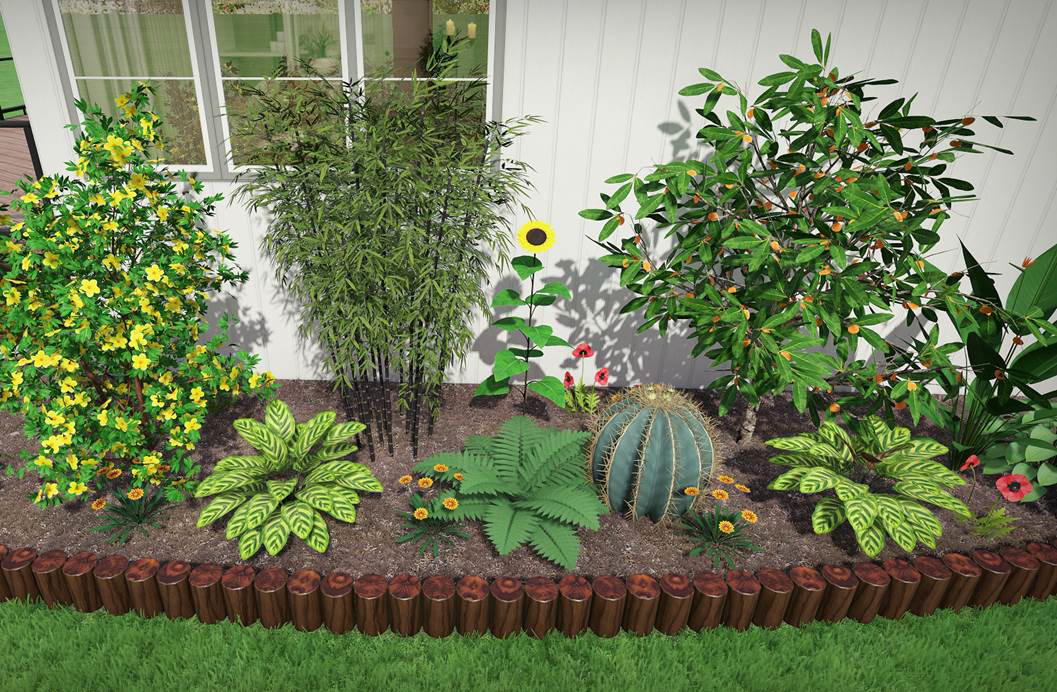The Main Principles Of Landscapers
The Main Principles Of Landscapers
Blog Article
Landscapers for Dummies
Table of ContentsThe Basic Principles Of Landscapers The Main Principles Of Landscapers The Best Guide To LandscapersThe smart Trick of Landscapers That Nobody is Talking AboutFascination About LandscapersAll about Landscapers
- A garden function where water is stood for by an aggregate rock product, typically a crushed rock or granite. These are most typically found in contemporary and Japanese garden layout.- A rock or flagstone patio, course, or sidewalk constructed without a concrete base. The base would be compressed crushed rock and the joints would be an accumulation or walkable ground cover. - A rock retaining or cost-free standing wall surface developed without the usage of mortar. - A below ground structure that accumulate water and permits it to reduce percolate right into the dirt around it.
Landscape style that is suitable with a sites' environment in both look and sustainability without unfavorable effects to the atmosphere. Interrupting the landscape is a line of separation that creates visual rate of interest in the garden by dividing one section from another section. This can be aesthetic or functional, maintaining one aspect (such as pea gravel) from getting combined right into an additional (like bark dirt).
Locations can likewise have a sensation of "enclosure" provided by trees, various other growings, fences, or screens. The landscape near the entrance to a structure.
Indicators on Landscapers You Need To Know

The component in a landscape layout or area in a landscape that is implied to be most prominent. The focal point can be a plant, boulder, statuary, collecting area, or other landscape attribute.

Landscapers Fundamentals Explained
Rock product, either rounded or fractured, that is reasonably little- usually 1" or much less. Low plants that are allowed or motivated to top a location. Can refer to any "hard" garden elements including statuary or boulders however a lot of commonly is used to describe paths, patio areas, and walls.: Height difference between the degree of water in a fish pond (or the degree of the pump if it sits outside the pond) and the top electrical outlet of water which affects efficiency of the water pump in gph (gallons per hour). Thick hedges or trees that form a fencing, screen, or border.
A chemical used to control weeds. Fence boards that run flat, typically utilized in contemporary or Japanese-inspired landscape styles. Lines that specify rooms within a landscape concept. These commonly expand from corners or key features of an existing structure. Appropriate use imaginary Web Site lines can help the landscape feel connected to the home and various other components.
An even more loosened up garden dominated by bent instead of straight bed lines and a much less rigid structure. Standard PNW landscapes are casual. A plant that spreads greater than wanted, or right into environments where it does damage. Portland has a list of invasive plants that need to not be set up in landscapes because they can spread to forests or rivers and be hard to control.
Landscapers Things To Know Before You Get This
Can consist of head positionings and coverage, pipe sizing, GPM specs, and products needed to install this system. Licensed professional that develops landscapes, coached in design and architecture as well as in cultivation.
Landscape developers commonly have less education than Landscape Architects and are not accredited. A completed landscape layout, outlining all aspects for the brand-new landscape.
Calcium material made use of to raise the pH in soil, which will make it much less congenial to moss (Landscapers). A water limited HDPE material made use of underneath fish ponds, streams and waterfalls in water functions. Making use of many growings of the very same range to load in an area in the landscape. This can reduce upkeep and water use in the yard.
A layer of garden compost or bark dirt used at the base of a plant. A plant that was existing in a geographic location prior to people started changing the landscape.
The Main Principles Of Landscapers
How the yard or a yard component is arranged in partnership to an existing or new feature or to an instructions. Yards that are not cut but expanded in landscapes as perennials.

Small round crushed rock. Plants that offer seasonal interest and afterwards pass away back in the wintertime. Annuals do not come back the following period, yet perennials do. Winter grass that is the most usual turf yard in Portland, OR et cetera of continue reading this the PNW.An open roofed framework over a patio area or other landscape function.
Lava accumulated ranging in size from 1/4" down to dirt. One of the most common landscape gravel in the PNW. Area of the landscape created to deal with water up until it can saturate right into the ground. A chain that manages water as it travels from a roofing rain gutter to the ground. Yard framework that Website develops a planting area that is contained and greater than the bordering grade.
Structure made from wood, concrete, paving stones, bricks or other materials for maintaining slopes and avoiding extreme erosion. Narrow watercourse. Creating a garden feature consisting mostly of stones with plantings that enhance and can grow in the rough atmosphere. Sprinkler head style that revolves a stream of water throughout an area.
How Landscapers can Save You Time, Stress, and Money.

Report this page